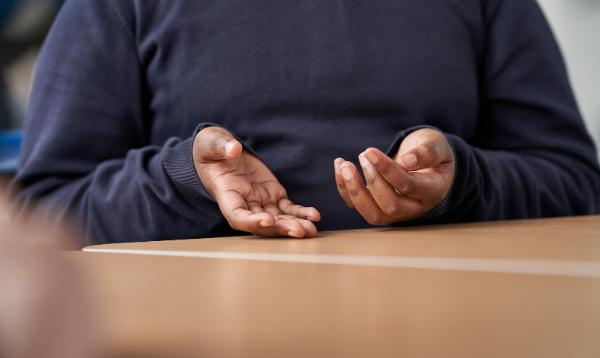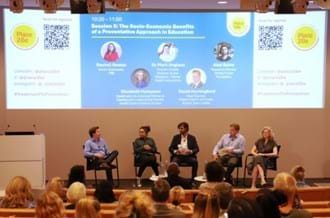Looking behind the behaviour – how children communicate
The following extract is adapted from Place2Be’s Mental Health Champions – Foundation programme.

During the Victorian era, the dictum ‘spare the rod and spoil the child’ reflected a widely held belief that children’s natural state had to be remedied with physical chastisement.
Children’s behaviour was regarded as ‘good’ or ‘bad’, i.e. as an expression of their innate morality. Although as a society we no longer support the physical abuse of children, the same definition of behaviour as ‘good’ or ‘bad’ remains prevalent. We refer to a ‘good’ baby if they don’t cry much; or a naughty child who doesn’t conform to our expectations.
Before we develop language, we depend on our behaviour to communicate our needs to our caregiver. Communicating with behaviour is not unique to children and adolescents, we do it as adults too. Sometimes words fail us!
Often our behaviours can be out of our conscious awareness. We don’t see the connection between our behaviour and the feelings that underlie it until it is pointed out by someone else or there is some other consequence. This is especially true for children because their experience is more limited. They may be dealing with a situation for the first time because they are growing and learning.
When we are stressed or overwhelmed with strong feelings, we can be reacting from our emotional brain, not our thinking brain. This is true of children and adults. When adults are stressed and pressured they may feel frustrated by a child’s behaviours and literally join in the fray by shouting or losing control in some way. Although this is understandable, it is unhelpful for children who are needing us to manage our own feelings so that we can be available to help them manage theirs. We can also harm them by shaming or humiliating them for being emotionally overloaded rather than helping them to calm down.
Being emotionally overloaded can bring out the baby in all of us, but hopefully, as adults, we have developed some strategies to stay rational at least some of the time. Children and young people are still developing their own strategies and need adult help to do that.
We can help children who are overwhelmed by their emotions by:
- Remaining calm
- Being curious about what their behaviour might be communicating
- Empathising with their feelings
- Listening, listening and then reflecting back on what we have heard including naming feelings
- Asking yourself what the learning opportunity might be
- Once they are calm, engaging the child in that learning, without censure or judgement.
To learn more, school staff can sign up to our free online children's mental health training.
News & blogs

Place2Be conference unites sector leaders around a mission to improve childrens mental health
Place2Be presented a conference to bring together school leaders, commissioners, funders and mental health experts.
Read more
The Young BAFTA Roadshow with Place2Be arrives in Lambeth, London
Read about the visit the Young BAFTA Roadshow made with Place2Be in Lambeth, London.
Read more
The Young BAFTA Roadshow with Place2Be arrives in Birmingham
Read the press release of the Young BAFTA Roadshow visit with Place2Be at Birmingham.
Read more



